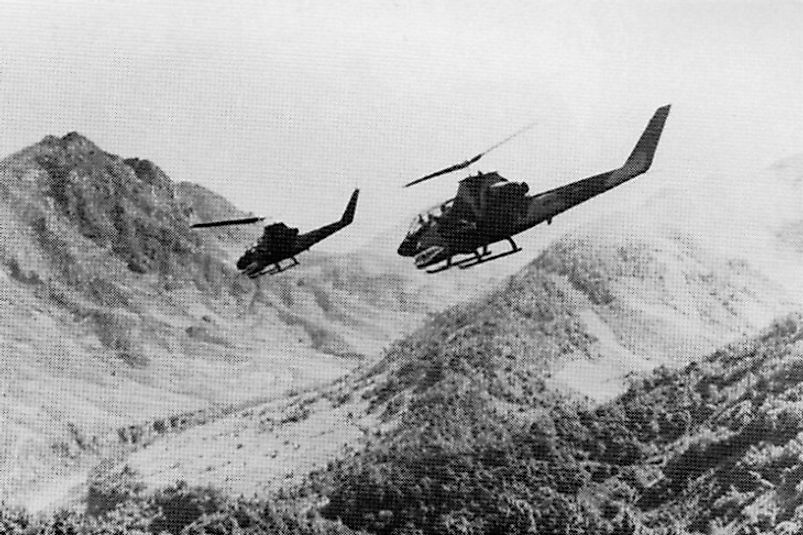Operation Lam Son 719 - Vietnam War

5. Background
By signaling a go ahead for the operation, the United States’ President Richard Nixon hoped that that any successes here would in the future improve the confidence and morale of the Republic of Vietnam’s army. Operation Lam Son was geared to make the South Vietnamese army be able to effectively defend its nation following any subsequent withdrawal of the United States forces. The United States provided aerial, artillery and logistical support during the entire operation. The United States government couldn’t move in ground forces as the law prohibited such kind of entry into Laotian territory. The aviation units supplied were used in transporting the South Vietnamese troops as well as supplies in and out of Laos throughout the entire operation.
4. Makeup
A ground force of 20,000 South Vietnamese troops were led General Hoàng Xuân Lãm. They were assisted in the operation by 10,000 American support troops, in addition to Army helicopters and U.S. Air Force aircraft backing them from above. North Vietnamese General Lê Trọng Tấn opposed them, with an effectively evenly matched force of Communist troops. His ~30,000 soldiers were comprised by both members of the People’s Army of North Vietnam and the Pathet Lao, Marxists in opposition to the rule of the constitutional monarchy governing their Laotian homeland.
3. Description
Lam Son 719 lasted from the 30th of January until the 24th of March, 1971. The first major objective of the operation was to attack and take over Route 9 to the town of Tchepone which was located to the south of Laos. The South Vietnamese and the United States military intelligence believed that this town was crucial as it housed many storage locations for ammunition, weapons, food and logistic supplies to the North Vietnamese army. In addition, this town was used as a training base, refreshment and replacement for the NVA troops who were involved in battle with the South Vietnamese. The 9th Division of the South Vietnamese army was then to clear Route 7 in Cambodia and engage in offensives against the North Vietnamese.
On March 16th , approximately a week later after the town of Tchepone was overtaken, by the South Vietnamese President Thieu called for troops to be pulled out. This was in contrast to General Abram’s military plea for a more serious offensive expansion so as to inflict more damage to the North Vietnamese. The move to pull out the South Vietnamese was politically motivated in that presidential elections were nearing for the Republic of Vietnam. The troop withdrawal was mainly carried out on Route 9 of the battle zone and this lasted between the 17th and the 24th of March.
2. Outcome
The operation ended up disastrous for the South Vietnamese, and the Communists emerged triumphant. The casualties figure from operation Lam Son 719 is not exactly known however estimates (which are also highly disputed) showed that close to 500 North Vietnamese Army personnel were killed in comparison to 1,600 personnel whom the Republic of South Vietnam lost. The United States lost a total of 215 military personnel and over 600 helicopters got damaged during the entire operation.
1. Significance
The North Vietnamese emerged victorious and the possible explanation for this was that control, command and coordination of the troops was very poor. In some instances, the operation was highly problematic given that political support was of paramount importance with regard to army promotions and retaining positions. Also, the individual army units did not get to learn their roles early enough before the beginning of the operation and this brought about many problems regarding coordination. This battle raised key questions for the Americans regarding the vulnerability of helicopter use in high intensity conflict areas. By 1975, Marxists had ousted the authorities within the constitutional monarchy then known as the Kingdom of Laos, to form the Lao People’s Democratic Republic, which is still in power. The royal government went into exile in the United States, and continues to operate therein with a very limited sphere of influence to this day.







